I wonder if John Singer Sargent influenced Mariano Fortuny…. They almost certainly met at Palazzo Barbaro, Venice in the 1890s. On the left (below) is Sargent’s fabulous and ethereal painting of the Countess of Sutherland, now in the Thyssen Museum in Madrid. Whilst on the right and centre is Mariano Fortuny’s portrait of his wife and business partner Henriette Negrin, painted in the 1930s.
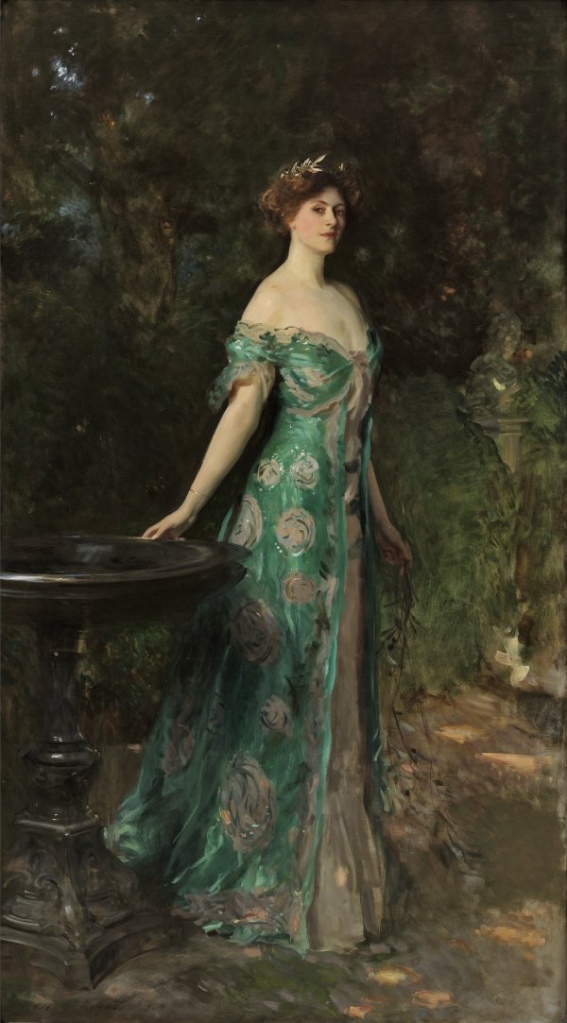


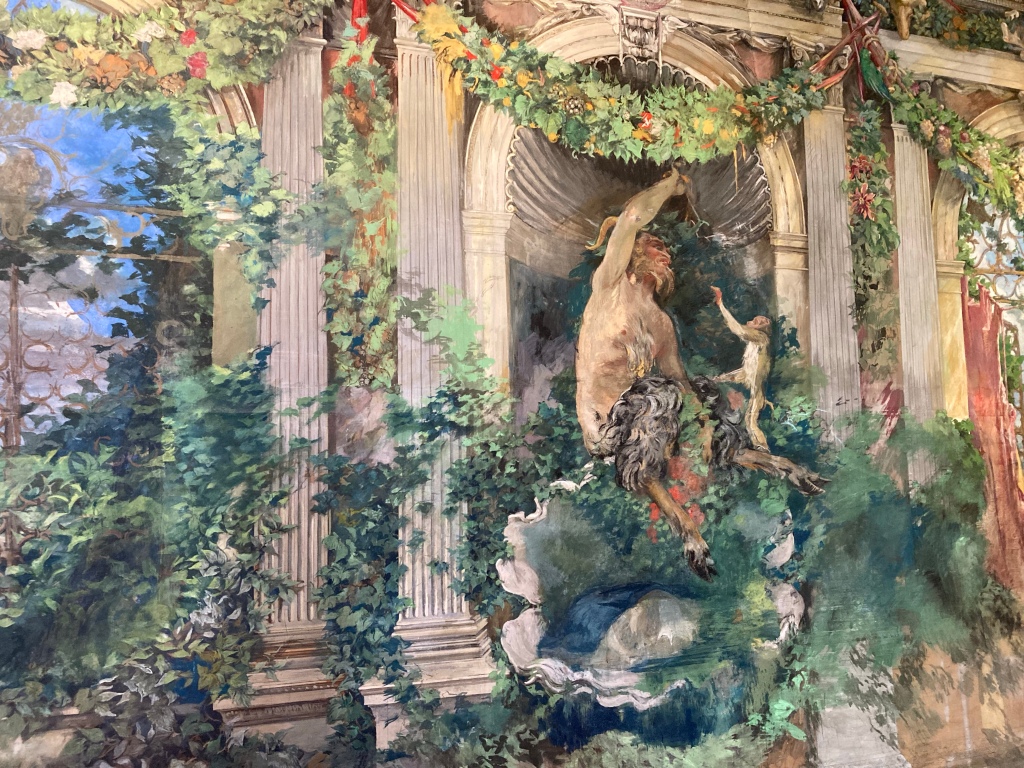

Portraits by John Singer Sargent and Mariano Fortuny (above). Below wall frescoes in Pre-Raphaelite style, Palazzo Orfei (Fortuny’s home in Venice).
John Singer Sargent was one of the most popular and prolific portrait artists of his day, whilst Mariano Fortuny was a multi-talented designer, inventor and artist. Fortuny was the Spanish-born son of another artist, Mariano Fortuny Marsal. Both artists found inspiration and exceptional light and colour in the rich textures of Venice and the waters of the lagoon. It is very probable that they met in the grand reception rooms of the Palazzo Barbaro as guests of Daniel Sargent Curtis, a wealthy American gentleman.
Meanwhile at Palazzo Orfei just a short walk from Palazzo Barbaro, Mariano Fortuny and his wife Henriette Negrin were living in a historic palace, filled with art, textiles, sketches and crazy designs. It was here in the early years of the 20th century that they designed and created the ‘Delphos’ gown. Spanish and French respectively, the couple were inspired by the aquatic city’s exceptional architecture and the richness of fabrics imported from the east. Fortuny was a talented painter, theatre designer and inventor. Negrin was an accomplished textile designer. As the new century dawned, Europe was awash with enthusiasm for ‘Orientalism’ and exotic ideas relating to the East. French archaeologists working at Delphi, north of Athens, had recently discovered a bronze statue, dating from about 500 years before Christ. The figure was named ‘The Charioteer’ and was clad in elegant, pleated robes. The ‘Delphos’ dress was inspired by the draped costume of this and other Greek statuary. Not only did Fortuny and Negrin design a dress that perfectly captured the mood of turn-of-the-century Paris, London and New York, they also invented and patented a ‘pleating technique’ that gave the Delphos gown its unique fluidity and elegance. You can read more about the Delphos gown here: Venice – Fashion, Fortuny, Silk dresses and Downton Abbey
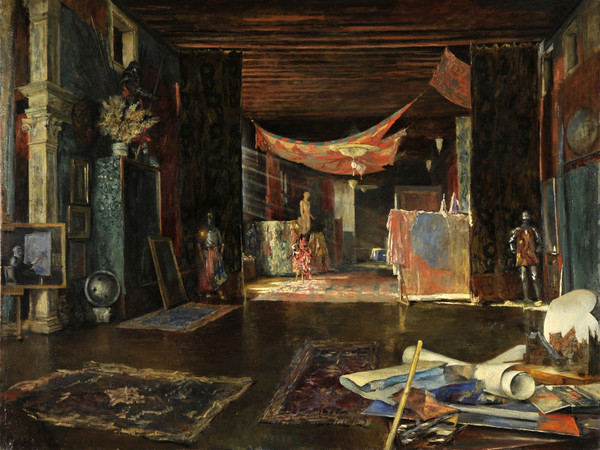


The studio at Palazzo Orfei (Fortuny) – left. Henriette Negrin painted by Mariano Fortuny c.1935 (centre). Lady Mary wears a navy blue, pleated silk ‘Delphos’ gown inspired by ‘Fortuny’ design. Downton Abbey – right
As the nineteenth century progressed and travel became easier for wealthy Europeans and Americans the city of Venice with it’s exceptional light, architecture and history became a magnet for a new generation of Grand Tourists. When travelling abroad these sophisticated types wanted to meet new friends and old acquaintances. So when Daniel Sargent Curtis established himself at Palazzo Barbaro on the Grand Canal, he soon found a host of visitors, artists and chancers knocking at his door. In fact John Singer Sargent, artist and relative of Daniel, visited Venice every year from 1898 until 1913. All these characters were entranced not only by Venice but by the intellectual ‘coterie’ centered on Palazzo Barbaro. A perfect example of this is Isabella Stewart Gardner who was so enamoured with Venice and Palazzo Barbaro that she and her husband set about building a Venetian palace style home for themselves, when they returned to Boston. They modelled their new home on the Palazzo Barbaro and construction began in 1899. She lived there until her death in 1924, when she left the building, her private apartments and her art collection to the public. To this day The Gardner Museum is a very important part of the artistic and cultural heart of Boston.
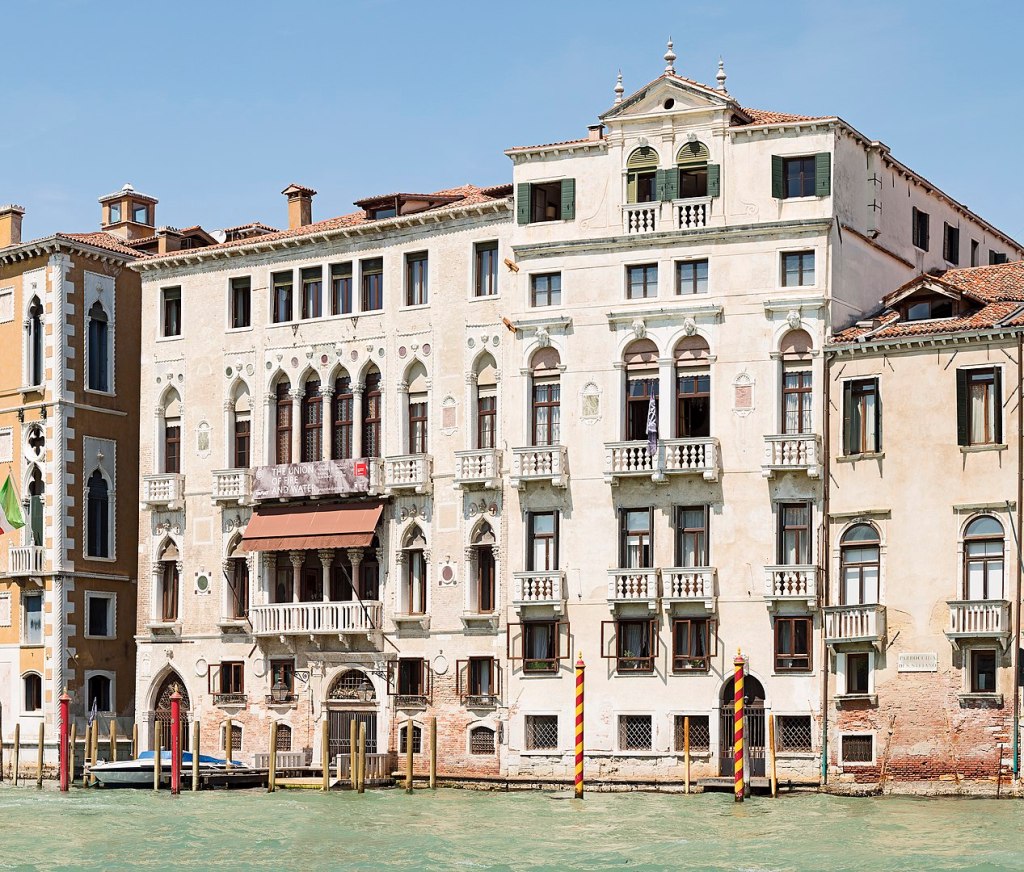

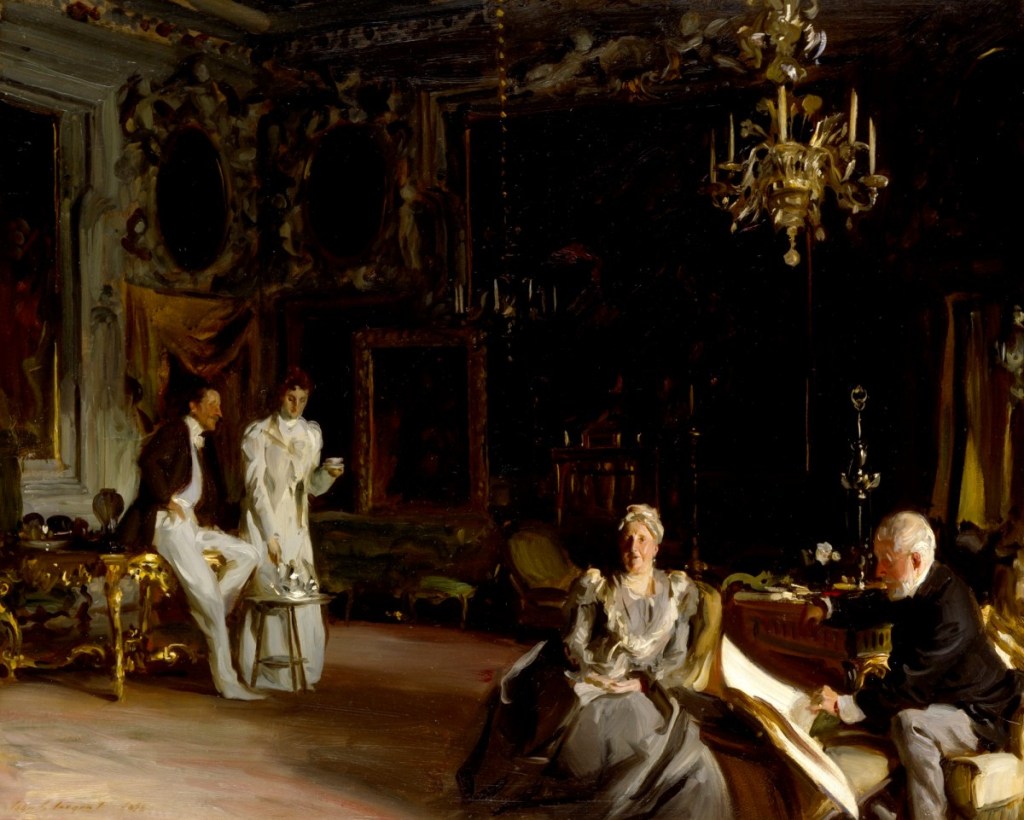
Palazzo Barbaro, Venice – Interior Salone by Ludwig Passini – Curtis family group by John Singer Sargent, Royal Academy Collection, London
It is fascinating to imagine drinks parties taking place at Palazzo Barbaro, perhaps with Ludwig Passini painting in the corner of the grand ‘salone’ whilst conversation continues between various members of the Curtis family and their numerous admirers. I like to think of Henry James completing a novel in the library, whilst Isabella Gardner and Bernard Berenson discuss her latest purchases in the drawing room. Meanwhile Robert Browning recites his latest poems to a small but engaged audience.
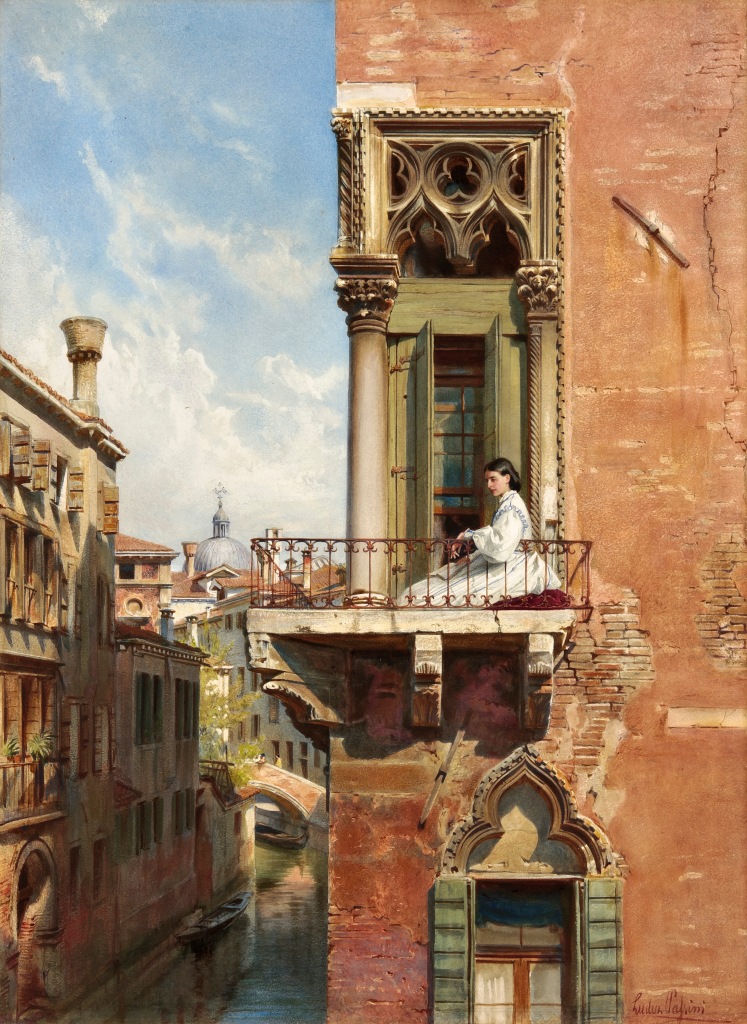
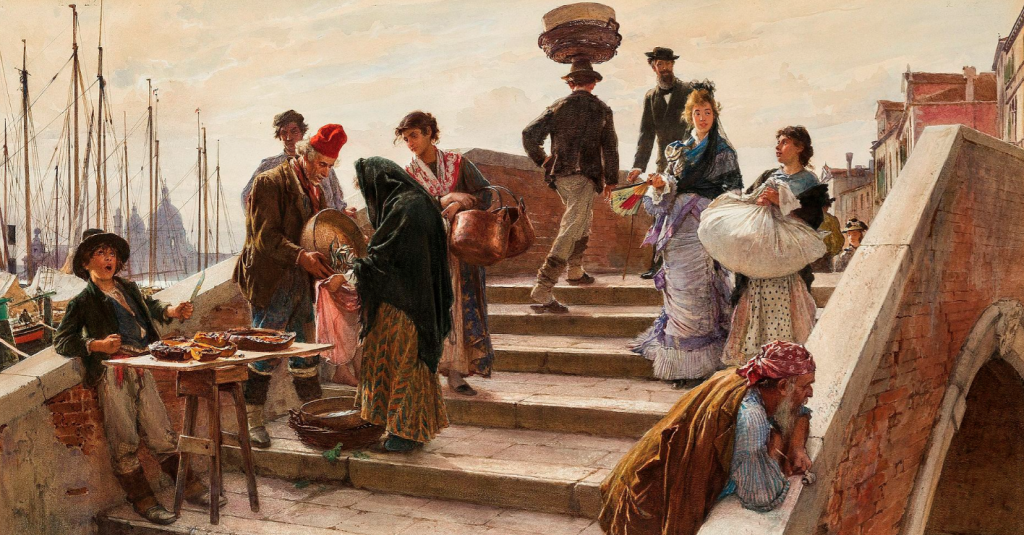
Anna Passini painted by her husband – artist Ludwig Passini (left) and Venetian Vendors (Passini) on the right
John Singer Sargent had an exceptional ability to capture the atmosphere and every day quality of the scenes he witnessed in Venice. His artistic skills enabled him to record and transfer on to canvas what he could see before him. The painting below of a typical ‘Venetian Interior’ is a masterpiece of light and dark. The combination of moving figures and the balcony at the far end of the room conveys movement from balcony to interior. Ladies continuing their daily lives, chatting, sitting and perhaps doing embroidery. Meanwhile Fortuny, in his painting and also in his textile designs creates a fluidity and elegance and realism that enables us to imagine that we are part of the picture or even wearing the luxurious Delphos gown ourselves.
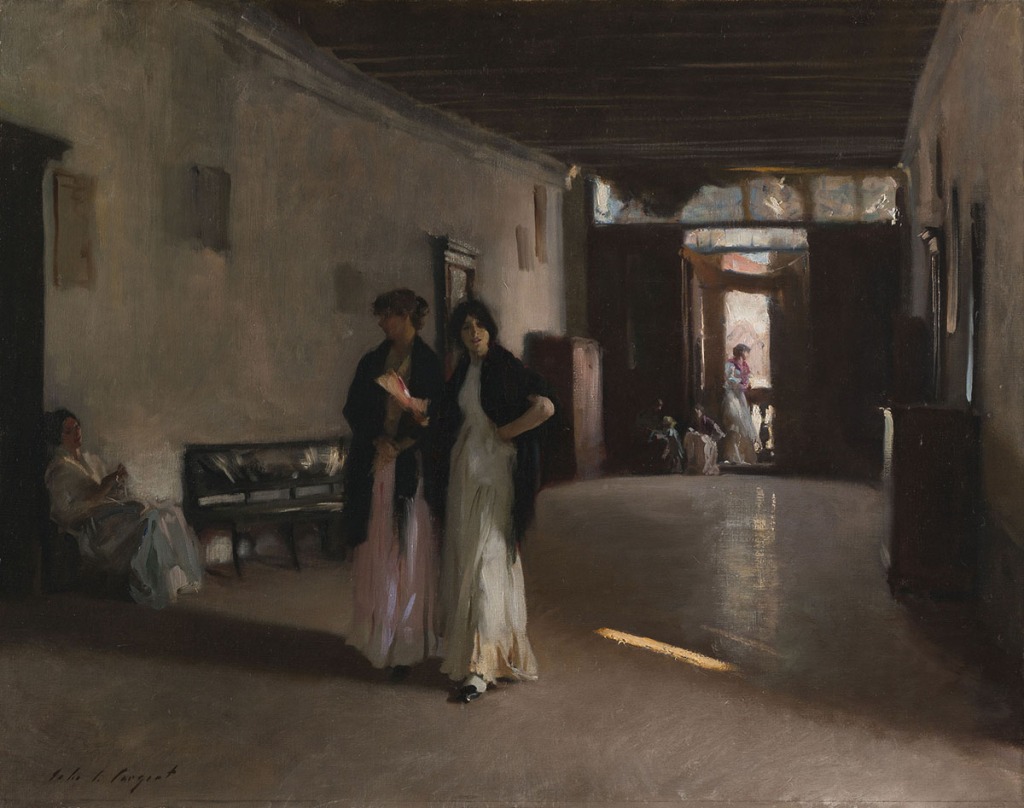
Venetian Interior – John Singer Sargent – c. 1880 – Carnegie Museum of Art, Pittsburgh
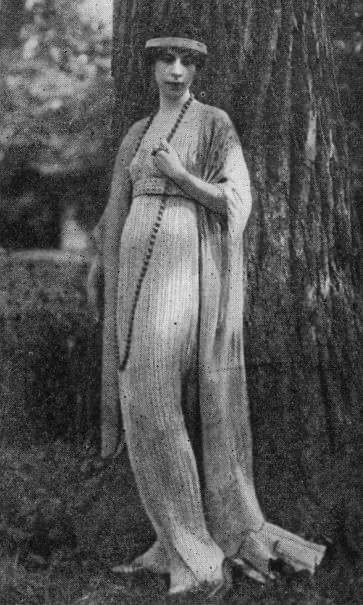
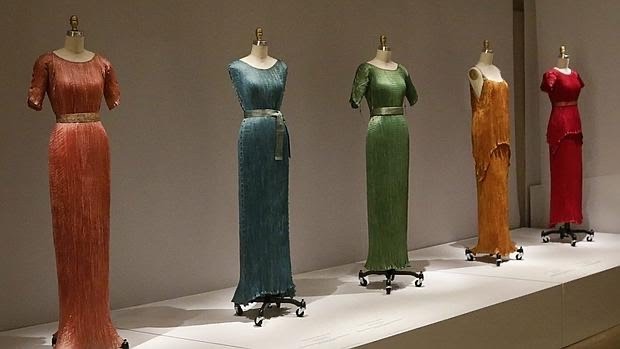

Variations of Delphos gown by Mariano Fortuny & Henriette Negrin. Delphos gowns at The Met, New York. Henriette painted by her husband c. 1935
LASTLY – were these artists of the late 19th century, Singer Sargent and Fortuny, influenced by one another? The answer is almost certainly yes. Artists are frequently inspired by other artists, and the artists flocking to Venice in the 1880s were inspired not just by one another but by the city of Venice itself. It was here in Venice in the drawing rooms and ball rooms of the Grand Canal that painting developed in keeping with the times into a looser more relaxed style, where fabrics flowed and movements fluttered in and out of view. Just like the waters of the Venetian Lagoon ebbing and flowing with the tides, so too the artistic heritage of Venice evolved and changed over time to represent the values and virtues, or indeed vices, of the times.
NOTES:
- For more on Ludwig Passini and Palazzo Barbaro: Venice – Portrait of a Lady
- For more on Mariano Fortuny: Venice – Fashion, Fortuny, Silk dresses and Downton Abbey
- Reflections on Venice: Venice – Casanova, Casinos & Canaletto (for a little 18th century fun)
December, 2022

Superb article. Thank you!
LikeLiked by 1 person
Thank you very much! Appreciated.
LikeLiked by 1 person